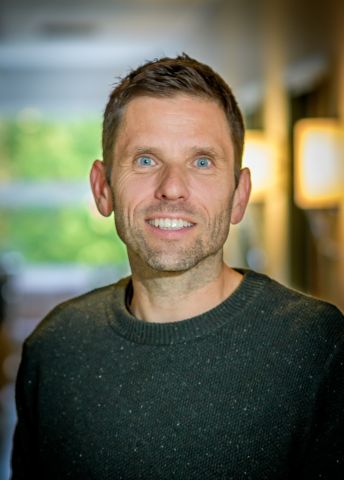
Tobias Uller
Professor of Evolutionary Ecology
Wallenberg Scholar
Institution:
Lund University
Research field:
Evolvability – the capacity of organisms to adapt and diversify


Wallenberg Scholar
Institution:
Lund University
Research field:
Evolvability – the capacity of organisms to adapt and diversify
An organism’s DNA, behavior and physiology influence the rate and direction of its evolution. Uller, who is a professor of evolutionary ecology at Lund University, is attempting to find out how.
“Evolution occurs when genetic changes – mutations – create new traits that are useful. Mutations occur randomly, but traits do not vary in the same way. Imagine, for instance, a mutation that makes legs a little longer. In that case all the individual’s legs will be longer. We consider that to be self-evident, but actually it’s not. Yet this is how evolution works.”
So these “random” changes are not entirely random; they are partly a production of the biology of a given species. All species are different, and therefore they don’t evolve at the same speed or as much.
“Elephants and E-coli have much in common, but also differ from each other in many ways that impact the way they evolve.”
Can organisms become better at evolving, and if so, how? To find out, Uller is studying Mediterranean wall lizards. The lizards are found on over a thousand islands, from large ones like Crete to tiny rocky islets. These lizards display an unusually high degree of variation in coloration and patterning, and evolve quickly, often without any obvious explanation to be found in their environment. Lizards on neighboring islands can differ widely in appearance, while those on islands far apart can be virtually indistinguishable. They therefore exemplify both divergence, where new patterns occur, and convergence, where similar patterns occur at different times and in different places.
Uller’s research team wants to ascertain whether the differences in diversity are due to differences in capacity to generate new forms and colors. They also want to examine whether the same color patterns occur over and over again because those specific patterns are easy to achieve via mutations. This is not a question of natural selection driven by the traits that work well; it is about how evolution is driven by processes that create variation – which then forms the basis for natural selection.
The aim is to study lizards from as many of the islands as possible – over 200 so far. The researchers are using a “lizard fishing rod,” a shaft with a loop at the end that is placed around the lizard’s neck so it can be lifted up. The animal’s back, stomach and sides are photographed using various filters, so the researchers can capture both the wavelengths visible to humans and those visible to the lizards themselves, which include UV light. DNA samples are also taken, usually with a mouth swab. After all this has been done, the lizard is released.
Do wall lizards have a special capacity for evolution that other lizards lack – lizards that have remained the same for millions of years?
The biology department in Lund also has wall lizards. They are used for other studies, such as attempts at crossing individuals from different genetic lines. Uller stresses the difference between variation, which can increase when genetically different individuals mate, and variability – the capacity to produce new variants. It may be that parts of the DNA are particularly good at creating new genetic variants, or perhaps old gene variants are reused over and over again.
Uller hopes that the wall lizards will become an example used in textbooks. “Textbook” is a word sometimes used figuratively, in the sense of a typical or clear example, but he means it literally. He hopes to be able to describe the intrinsic forces driving evolution in a new way.
“Ten years ago it was controversial to give evolutionary explanations based on how organisms work, but in ten years’ time I think this issue will be regarded as trivial. It would be great if we could show how mechanisms that create the variation itself drive adaptation and diversification. And the lizards’ beautiful colors would look good in a textbook!”
When Uller is asked to describe his approach to research, he reflects for a moment:
“Unclear and chaotic! I like it when I don’t even know what is the right question to ask. I want to try to understand phenomena that we don’t know how to handle – much more than delving really deep into issues that have already been thoroughly examined. This means that I sometimes need to embrace new concepts and ideas from fields other than my own, such as developmental biology or ecology. I believe the ability to shift perspectives is one of my strengths as a researcher.”
Biologists are usually described as “green” if they work with nature, “white” if they work in the laboratory. Uller sometimes refers to himself as a “black” biologist – someone who is interested in theories and concepts. He had no particular interest in nature when he was young, nor any plans to become a researcher. When he began studying mathematics and biology he soon became interested in evolution.
“Toward the end of my studies I felt the natural step was to go on to do a PhD. I wasn’t ready to finish, and I felt I still had much to learn. But I never thought ‘I want to be a researcher’. It’s more that I want to be faced with situations involving aspects I don’t understand, so I have the chance to learn something new. That’s what I like best of all.”
Text Lisa Kirsebom
Translation Maxwell Arding
Photo Kennet Ruona